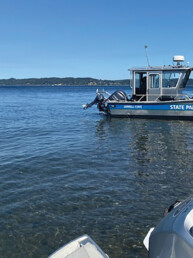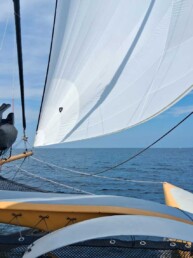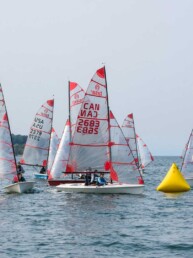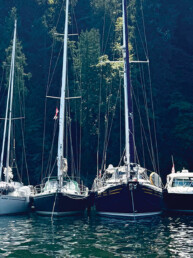Navigation lights help identify vessel type and its direction of motion. The required lights are specified in the Navigation Rules, Part C, Rules 20 to 31. Power vessels in Rule 23 and sailing vessels in Rule 25 are the two classes we focus on here. These two basic vessel classes have simple rules. Other vessel classes (towing, fishing, restricted motion, etc) are covered in other Rules. Rules for towing vessels are complex. An important part of these rules is included in Rule 20b, namely that no other lights than those specified by the rules should be shown if they could possibly interfere with the identification of the required lights.
The lights are required (must be shown) from sunset to sunrise, but may be shown any time deemed appropriate. Note that automobile lights are required from evening twilight to morning twilight, which is a longer period, but less precisely defined.
For now we look at the three basic nav lights categories: sidelights (red and green), masthead lights (white), and sternlight (white). These are defined in Rule 23a. These rules establish the terminology as well: sternlight and sidelight are written as one word.
Sidelights are seen from dead ahead to 22.5º abaft the beam. Sternlight is shown in the aft gap between those two, and the masthead lights are seen from everywhere except the stern sector, ie masthead lights and sidelights are seen from the same sectors.
The seemingly strange choice of 22.5º is a historic accident as this equals two points on the compass and the original Rules from the 1800s were written in terms of compass points. See our note on boxing the compass.
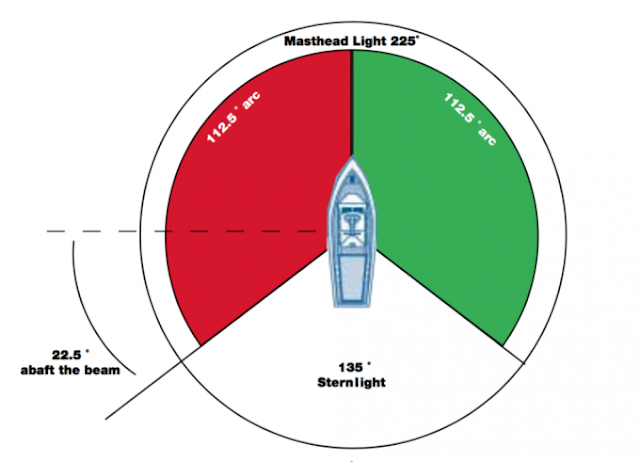
David Burch
David Burch is the owner and courses director of the Starpath School of Navigation. An author and authority on weather and navigation, he has more than 70,000 miles of ocean experience ranging from the Arctic ice edge to Tahiti and Australia in the Pacific and from New York to Panama in the Atlantic.

